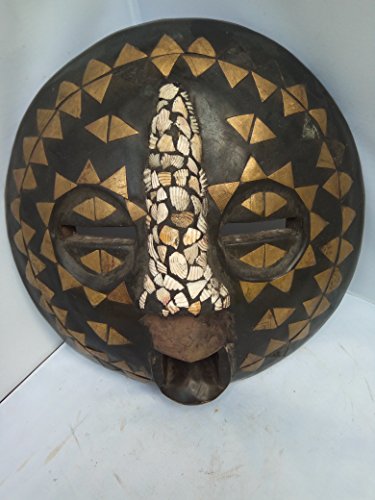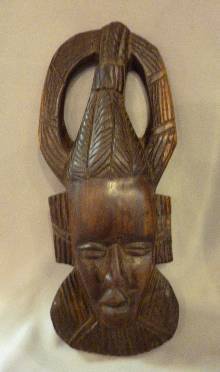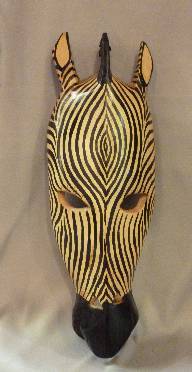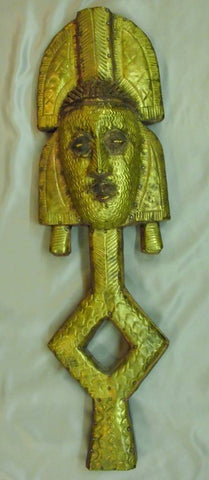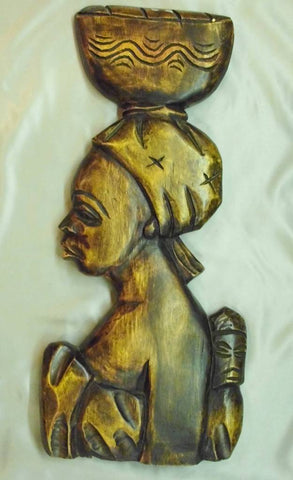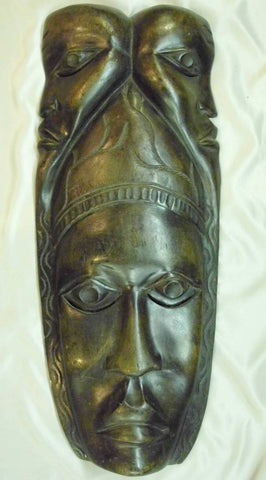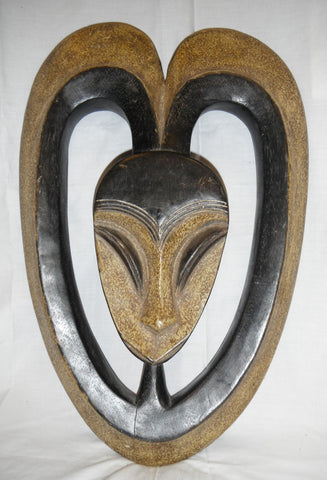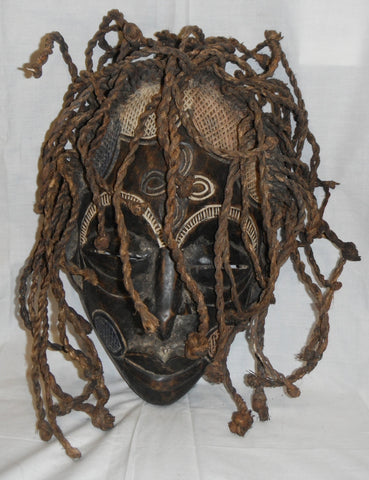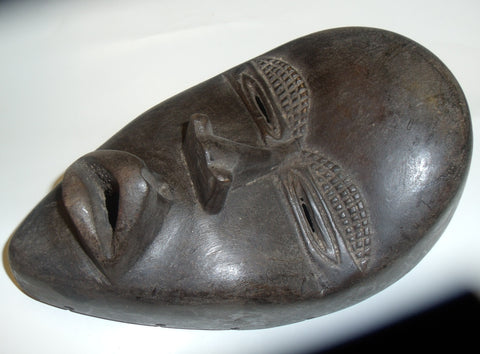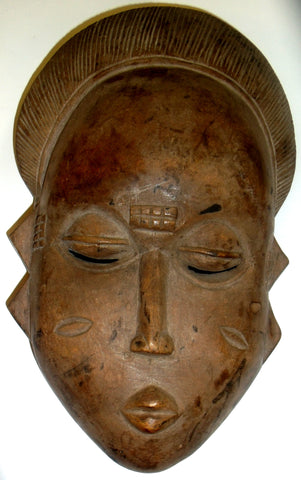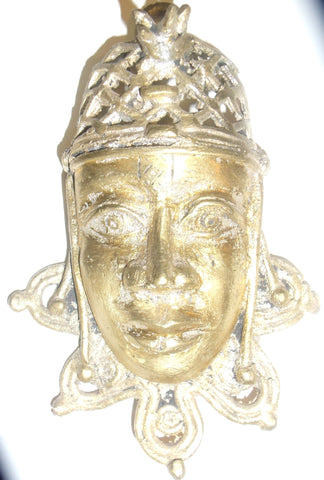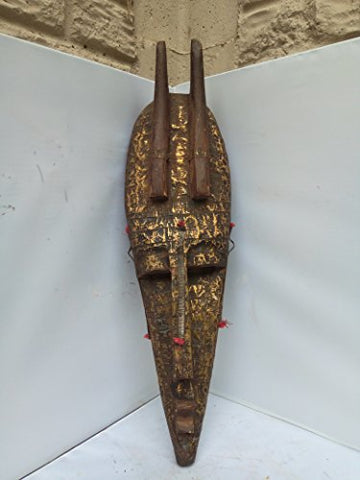Bakota With Shells " Protection For Property" Mask from Gabon West Africa 14x14 in
TRIBAL AFRICAN ART KOTA (AKOTA, BAKOTA, KUTA) Gabon and People's Republic of the Congo The land of the Kota, numbering some 75,000, is situated in the eastern part of Gabon, extending slightly into the People’s Republic of the Congo. The Kota are actually a number of groups of peoples with common cultural traits. Although these peoples share many cultural traits, they are by no means homogeneous. The rain forests which surround the Kota are farmed with slash and burn techniques, combined with crop rotation. By moving crops from year to year, erosion and soil depletion is avoided. The main crops grown are plantains and manioc.The Kota live in villages comprising two or more clans. Clans in turn comprise several lineages or family groups that trace their descent from a common lineage ancestor. This is an important point related to their art, for like the Fang, the Kota revere the relics of ancestors. Ancestor worship formed the core of the family group’s religious and social life. At the death of a chief, the initiates would take from the body of the deceased various relics, which were then decorated with metal and rubbed with powders of multiple magical powers. The Kota have produced large quantity of statues of ancestors with the diamond-shaped lower part called mbulu-ngulu; these rather two-dimensional sculptures are in wood; symbolic metals were applied to the upper part in strips or sheets to add power. Copper in particular was identified with longevity and power. These statues stood guard in cylindrical bark boxes, on baskets or bundles called bwete that contained the skulls and bones of important ancestors. Bound into a packet and lashed to the base of a carved figure, the bones formed a stable base that allowed the image to stand more or less upright.

